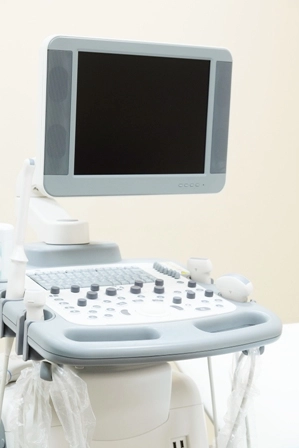Outpatient Facility Coding Alert
OIG Takes Aim at HOPD Reimbursement Policy

HOPD/ASC reimbursement disparity, 2-midnight policy make the list of ‘Top 25 Unimplemented Recommendations.’ On May 17, the OIG released its latest Compendium of Unimplemented Recommendations, which lists the top actions that the OIG believes HHS should have taken to save money and improve quality. On the list are two hotspots for hospital outpatient departments (HOPDs) that the watchdog has mentioned in previous audits and evaluations. In the document, the OIG reiterates its belief that reimbursement for similar procedures should be comparable for HOPDs and ambulatory surgery centers (ASCs). Background: When it comes to actual surgeries, there’s not much difference between a surgery performed in a hospital outpatient department (HOPD) and a surgery performed in an ASC. There are a few patients who don’t get care in ASCs because of certain medical conditions. For example, patients with latex allergies choose HOPDs because few ASCs have latex-free operating rooms, note the authors of Commercial Insurance Cost Savings in Ambulatory Surgery Centers. Similarly, obese patients (with body mass indexes of 40 or greater) may go to HOPDs for safety reasons. Obese patients tend to be higher risk, so it makes sense for them to be closer than an ambulance ride away from a hospital inpatient department should something go awry during a procedure. The main difference between HOPDs and ASCs is cost—both to the patient’s own pocket and to the insurer. For example, the median difference between average ASCPPS and OPPS payments was $363.15 in 2011, according to a report the OIG released in April 2014. The Compendium points out that the same report concluded that Medicare could have saved nearly $7 billion on surgical procedures performed between 2007 and 2011 had HOPD and ASC reimbursement rates been similar for similar procedures. During the same time period, beneficiaries would have save $2 billion because the co-payments for ASC procedures are lower than co-payments for the same procedures performed in an HOPD. “CMS should seek legislation that that would exempt the reduced expenditures as a result of lower outpatient prospective payment system payment rates from budget neutrality adjustments for ambulatory surgical center-approved procedures,” the OIG recommends. In plain English, the watchdog agency wants CMS to persuade Congress to pass a statute that right sizes reimbursement disparities for HOPDs and ASCs and brings both kinds of facilities down to ASC payment levels. 2-Midnight Madness The Compendium also dredges up the longstanding “2 midnight policy.” In a nutshell, beneficiaries pay less out-of-pocket for inpatient hospital stays compared to outpatient hospital “observation” stays. And, beneficiaries must pay much more out-of-pocket for subsequent SNF care if they go from an outpatient stay into a SNF without a 3-day qualifying inpatient stay at the hospital. To null the admittedly unfair out-of-pocket costs that sometimes hit outpatient Medicare benes, hospitals have found a workaround that the OIG doesn’t like because it costs the CMS more money in the end. “OIG found that hospitals continue to bill Medicare for many short inpatient stays that are potentially inappropriate — Medicare paid hospitals three times as much, on average, for short inpatient stays as it paid for short outpatient stays, although the stays were for similar reasons,” the Compendium says. To make the workaround unnecessary, the OIG has recommended that outpatient observation stays count towards the 3-night requirement for SNF benefits. CMS has concurred, and has said they need statutory change to alter the regulation. “As such, we anticipate that CMS will provide OIG with more information about its plan to implement the recommendation by June 2017,” the Compendium concludes. We’ll keep you posted. Resources: To read the Compendium of Unimplemented Recommendations, go to: https://oig.hhs.gov/reports-and-publications/compendium/files/compendium2017.pdf. To read Commercial Insurance Cost Savings in Ambulatory Surgery Centers, go to: http://www.ascassociation.org/advancingsurgicalcare/reducinghealthcarecosts/costsavings/healthcarebluebookstudy. To read Medicare and Beneficiaries Could Save Billions If CMS Reduces the Hospital Outpatient Department Payment Rates for Ambulatory Surgical Center-Approved Procedures to Ambulatory Surgical Center Payment Rates, go to: https://oig.hhs.gov/oas/reports/region5/51200020.asp. To read Vulnerabilities Remain Under Medicare’s 2-Midnight Hospital Policy, go to: https://oig.hhs.gov/oei/reports/oei-02-15-00020.asp.
Related Articles
Outpatient Facility Coding Alert
- Reimbursement Update:
Update Your Systems To Handle OPPS, ASC Changes That Take Effect July 1, 2017
2 drugs get pass-through status. Attention HOPDs and ASCs: It’s time to read up on [...] - Regulatory Update:
OIG Takes Aim at HOPD Reimbursement Policy
HOPD/ASC reimbursement disparity, 2-midnight policy make the list of ‘Top 25 Unimplemented Recommendations.’ On May [...] - The In's and Out's of OON Billing
Check out these best practices for reducing your FCA risk if you bill OON. Should [...] - You Be the Coder:
Unbundling a No-Go for Breast Procedures
Question: A new breast surgeon in our hospital outpatient department wants to bill 19301 (Mastectomy, partial [...] - Reader Question:
When Can We Report Debridement and Shoulder Arthroscopy Separately?
Question: We’ve heard you can report 29822 and 29823 separately when performed along with shoulder arthroscopy [...] - Reader Question:
Preventing Aranesp® Denials
Question: Our hospital outpatient department is seeing an increase in Aranesp® denials. Any ideas on how [...] - Reader Question:
Tips for Coding Turbinates Procedures
Question: “Dr. Johns documented that he used a blade to submucosally excise tissue with a microdebrider [...]




